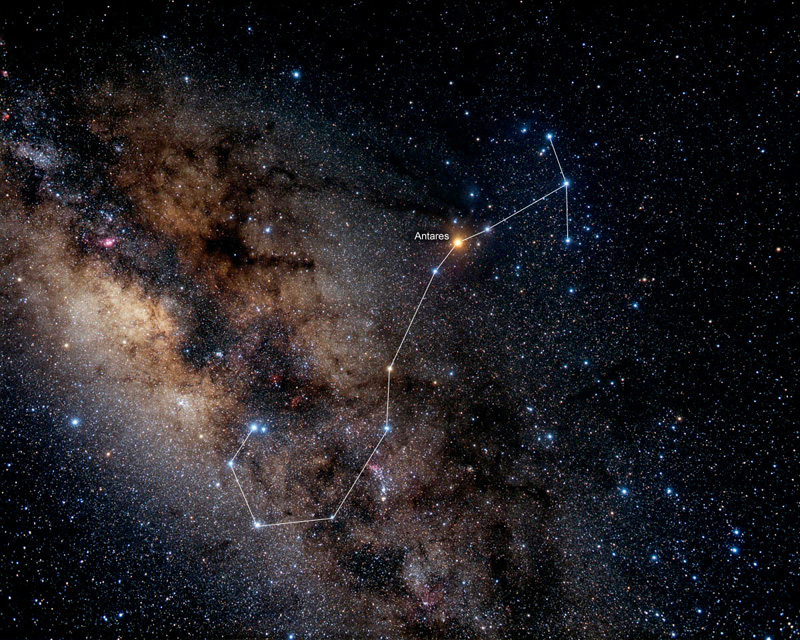THE SOUTHWORTH PLANETARIUM
207-780-4249 www.usm.maine.edu/planet
70 Falmouth Street Portland, Maine 04103
43.6667° N 70.2667° W
Altitude: 10 feet below sea level
Founded January 1970
Julian Date: 2458850.16
Julian Date: 2458850.16
2019-2020: LXXVIII
"Heavens below!"
THE DAILY ASTRONOMER
Thursday, January 2, 2020
January 2020 Night Sky Calendar
Part II
FRIDAY, JANUARY 17: LAST QUARTER MOON
So, why do we call the half moon a "quarter" moon? Half of the moon's disc appears illuminated now, after all. The word "quarter" refers to the orbital position. The moon's four cardinal points are conjunction (new moon), first quadrature (first quarter), opposition (full moon) and second quadrature (last quarter). The quarter refers to one fourth of the moon's orbit. It has moved one quarter of its orbit away from the opposition point.
SATURDAY, JANUARY 18: MARS 4.7 DEGREES NORTH OF ANTARES (SILVER EVENT!!)
Heavens, do we love it when this event happens! The apparent close approach of Mars and Antares, the brightest star in Scorpius the Scorpion. Antares is one of the four bright stars that are positioned so close to the ecliptic path that they will sometimes draw close to planets (and rarely will be occulted by them). The other stars are Spica (Virgo), Aldebaran (Taurus) and Regulus (Leo.) We are particularly pleased when Mars and Antares experience an appulse because Antares' name literally means "Martian rival," due to its reddish color. The planet and star certainly do resemble each other, although Mars doesn't twinkle, as it is a disc shaped planet instead of a pinpoint star. Also, the planet and star appear red for different reasons. Mars is red because its surface is coated with iron oxide, known to us terrestrial sorts as "rust." Antares is red because it is a comparatively cool star: 2,300 is the effective temperature of its photospheric layer. Mars will appear slightly dimmer than its rival Antares. See them both in the pre-dawn eastern sky.

Antares: the bright red star marking the heart of Scorpius, a constellation
currently visible in the eastern pre-dawn sky.
MONDAY, JANUARY 20: MOON NEAR MARS
The waning crescent moon loiters near the planet Mars in the eastern pre-dawn sky tonight. While this close encounter isn't as spectacular as the close approach of the moon and Venus, the sight is still eye candy for the star-minded. Moreover, the moon will help you find Mars, which still isn't particularly bright or high in the sky.
THURSDAY, JANUARY 23: MOON NEAR JUPITER (BRONZE EVENT!)
Jupiter has just returned to the early morning sky. Find it tonight close to the thin crescent moon. The moon and its giant planet companion will be about 21 degrees from the Sun when they attain their minimum separation distance. One will have to rise early to observe this planet-moon appulse.
Jupiter has just returned to the early morning sky. Find it tonight close to the thin crescent moon. The moon and its giant planet companion will be about 21 degrees from the Sun when they attain their minimum separation distance. One will have to rise early to observe this planet-moon appulse.
FRIDAY, JANUARY 24: NEW MOON
Beginning of lunation cycle 1201
TUESDAY, JANUARY 28: MOON NEAR VENUS (GOLD EVENT!!!)
The sight of the moon close to brilliant Venus is so gorgeous and delightful that even many people who consider astronomy to be a preposterous waste of time can't help but cast a second glance. See the crescent moon and Venus in the western evening sky tonight. The moon and Venus are the night sky's two brightest objects: see them together tonight!
PLANET WATCH
MERCURY is even more elusive than usual this month. At month's beginning, it is too close to the Sun to be seen. Mercury returns to the evening sky by late January. VERDICT: Don't bother trying to find Mercury until the very end of the month. Even then, Mercury will prove difficult to find
VENUS (Pick Planet!) Venus is a marvel to behold in the western evening sky. One will have no difficulty finding our sister world in the west soon after sunset. VERDICT: Venture out in the early evening to find Venus any time this month! Brilliant, beautiful and easily accessible.
MARS promises to be a spectacle in the autumn. For now, Mars remains low in the pre-dawn eastern sky. The red planet rises earlier each day and is growing gradually brighter. VERDICT: Mars is still only for early morning risers. Find it low in the eastern sky after 4 a.m.
JUPITER finally returns to the early morning sky by late month. Best date to find it will be January 23rd, when it appears close to the moon. VERDICT: Start searching for Jupiter by the second half of the month. Remember that Jupiter will be rising earlier each day and will become a prominent planet again much later in 2020, so you'll have plenty of opportunities to see it.
SATURN isn't truly visible this month. It technically inches up into the eastern sky in late January, but don't look for Saturn until February.